As a teen I really enjoyed Chevy Chase in the Fletch movies. Jon Hamm is staring in the reboot and the trailer looks great.
A morning task: transplant 3 small hazelnut bushes. Also, enjoy observing a red ant exploring a garlic chive flower cluster.
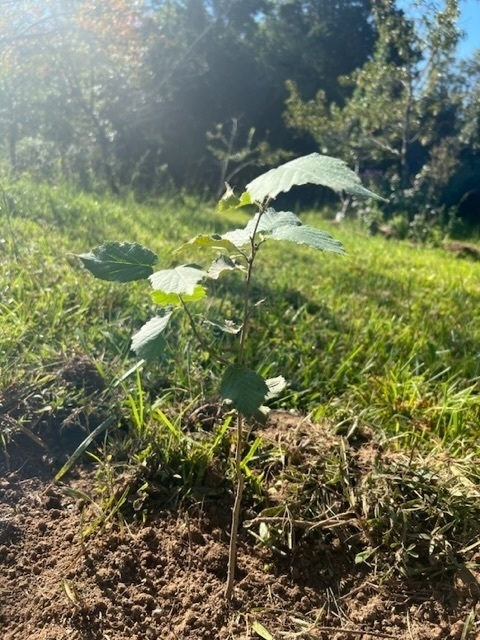
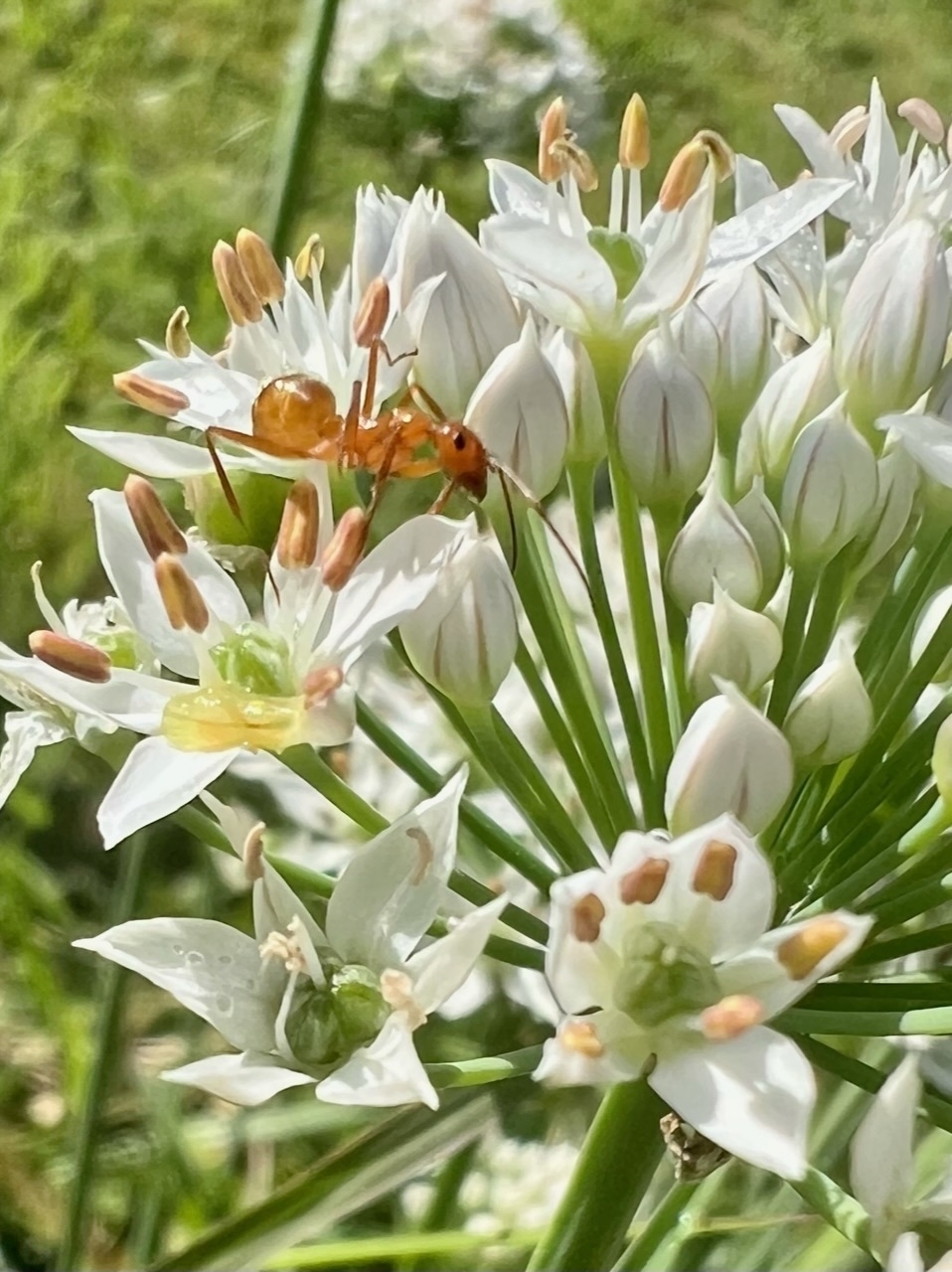
Over the past couple of weeks a series of pseudoscience articles have been circulating on the internet claiming that the Big Bang didn’t happen. Such fantastical claims immediately call for great skepticism. Add to it that the sources have the strong odor of “The science elites are locking us out” and, not surprisingly, the skepticism is likely justified. Also not surprising, this week we’re beginning to see more reputable sources respond to the question.
I’d suggest starting here, Universe Today, as they have an excellent track record on sticking to the science: The Latest Webb Observations Don’t Disprove The Big Bang, But They Are Interesting
Their concluding paragraph is perfect:
It’s the kind of puzzling and unexpected data astronomers were hoping for. It’s why we wanted to build the Webb telescope in the first place. And it tells us that while the big bang model isn’t wrong, some of our assumptions about it might be.
For background on the observations: Four revelations from the Webb telescope about distant galaxies Source: Nature
Annie, one of my furry friends and so, so sweet. She was a stray in a group that ran by my cabin 6 years ago. The others kept going she stopped and moved in. ❤️
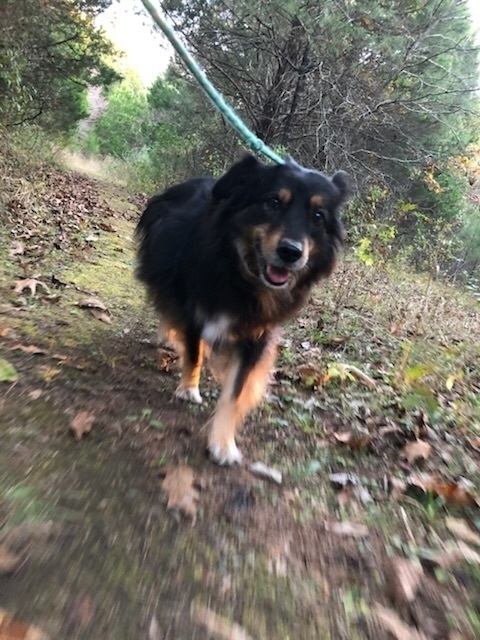
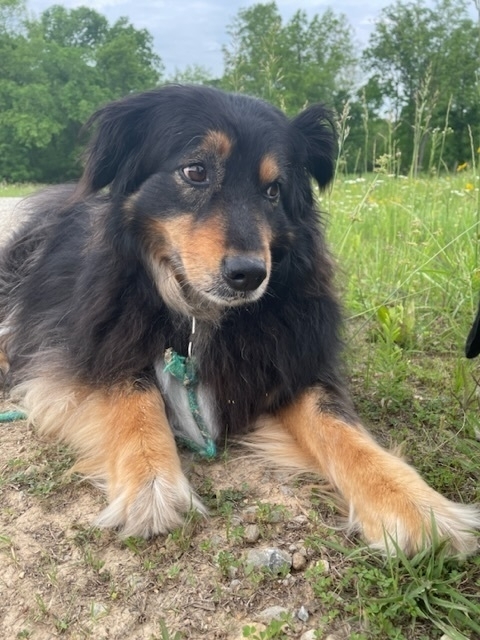
Galerina marginata, known as funeral bell, deadly skullcap or autumn skullcap, a species of extremely poisonous mushroom-forming fungus.

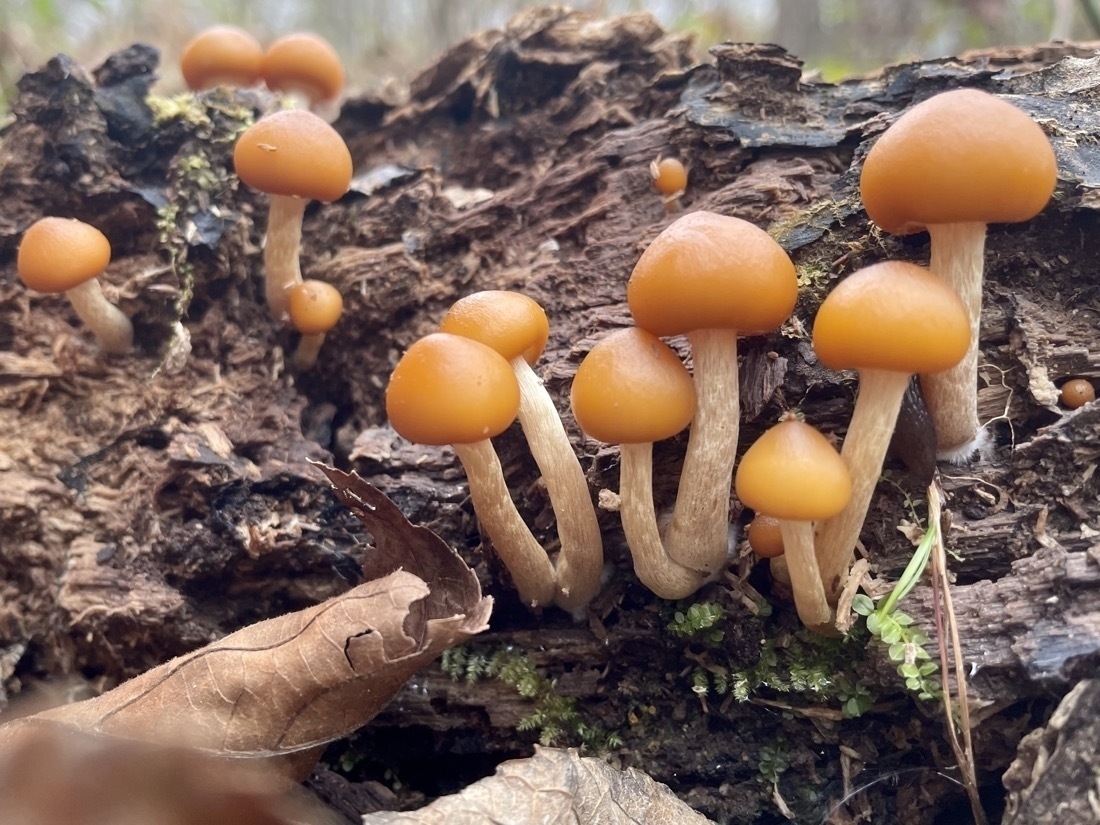
Struggling to comprehend the full implications of the climate emergency is something that I do on daily basis. I’m grateful for what seems to be a new trend of increasing media coverage on all of the many ways that rapid and severe climate change are now being seen everyday across the planet. Finally, it seems that the immediacy and the real-time urgency of the problem is being acknowledged. Interestingly, it brings me a simultaneous sense of relief that it is finally being given the attention it should be given but with that is increased panic and frustration that we’re still acting too slowly and too mildly.
As I read through climate stories I find that I have to be careful of perspective and context. It’s a lot of information, some of it on the ground reporting of current climate emergency events but often along side of predictions and expectations of both oncoming near, mid and long-term weather changes as well as the possible ways that human social structures might adapt.
This story by CBS News about the predicted increase of widespread zones of extreme heat in the US provides one example. Emphasis added below:
The nonprofit research firm gathered surface temperature data using a peer-reviewed method that taps publicly available data from satellites and weather stations. It then modeled projected temperatures under a global warming scenario referred to as RCP 4.5, under which fossil-fuel emissions peak around 2040 and then decline.
While the article is focused on this dangerous heat zone that is predicted to take over much of the Midwest of the US, what caught my attention is the fact that we will still be increasing carbon emissions for 18 more years under the RCP 4.5 model cited in the research. Assuming that that model is even close to accurate, I’m trying to comprehend, given the range of current weather extremes and resulting current repercussions for natural ecosystems and human suffering, what is the reality going to be when we continue to increase carbon in the atmosphere for 18 more years?
But even worse, at 18 years we don’t suddenly stop adding carbon, we’re just adding less than previous years. We’ll still be adding many billions of tons of carbon per year. Currently we emit 50 gigatonnes of carbon dioxide-equivalents per year. That’s likely to persist for several decades. The link above lays out the various possible trajectories. With current policies we’re looking at 2.5 to 3.2°C warming. We’re currently at about 1.3° warmer. Even in the best case scenarios of reduction we’re committed to 2° of warming.
I’m trying to really, truly begin to comprehend it. Based on what we have today at 1.3° of increase, what does each year going forward look like. Even for someone who’s been thinking and imagining the scenarios and the reality, it’s still difficult to comprehend. Here’s a just a tiny sampling of the recent headlines detailing just the most recent weather headlines:
- The temperature threshold the human body can’t survive Source: Grist
- Why is England so vulnerable to droughts? Source: The Guardian
- California urges residents to cut power use as searing heatwave grips US west | California Source: The Guardian
- US issues western water cuts as drought leaves Colorado River near ‘tipping point’ Source: The Guardian
- Report: Arctic heating nearly 4 times faster than rest of Earth Source: The Week
- The drought across Europe is drying up rivers, killing fish and shriveling crops : NPR Source: NPR
- Rhine close to running dry in German energy nightmare Source: The Telegraph
🚲📷 More bike love! This is a follow-up to my post yesterday where I shared my beloved gravel bike. Today it’s my equally loved fat bike. Years ago I used a mountain bike for trail riding, this time around I opted for an over-sized fat tire bike. The tires for fat bikes range from 3.5" to 5", mine has 4" tires. As I understand it fat bikes were created for year round riding allowing for winter riding on snow and also easier access to softer surfaces like sand.
While many of the newest more expensive fat bikes include front or even full suspension I opted for a ridged frame and fork because I tend to ride slower and on trails that are not overly rough. I also use it for gravel rides when we’ve had rain and the gravel road base is softened up as will be the case for todays ride. While a fat bike tends to be a bit heavier than a standard mountain bike that has much lighter 2" tires they do offer a soft, plush ride, the tires more easily going over fallen branches, larger rocks or other obstacles. They’re a blast to ride!
Have a bike you love? Share it!
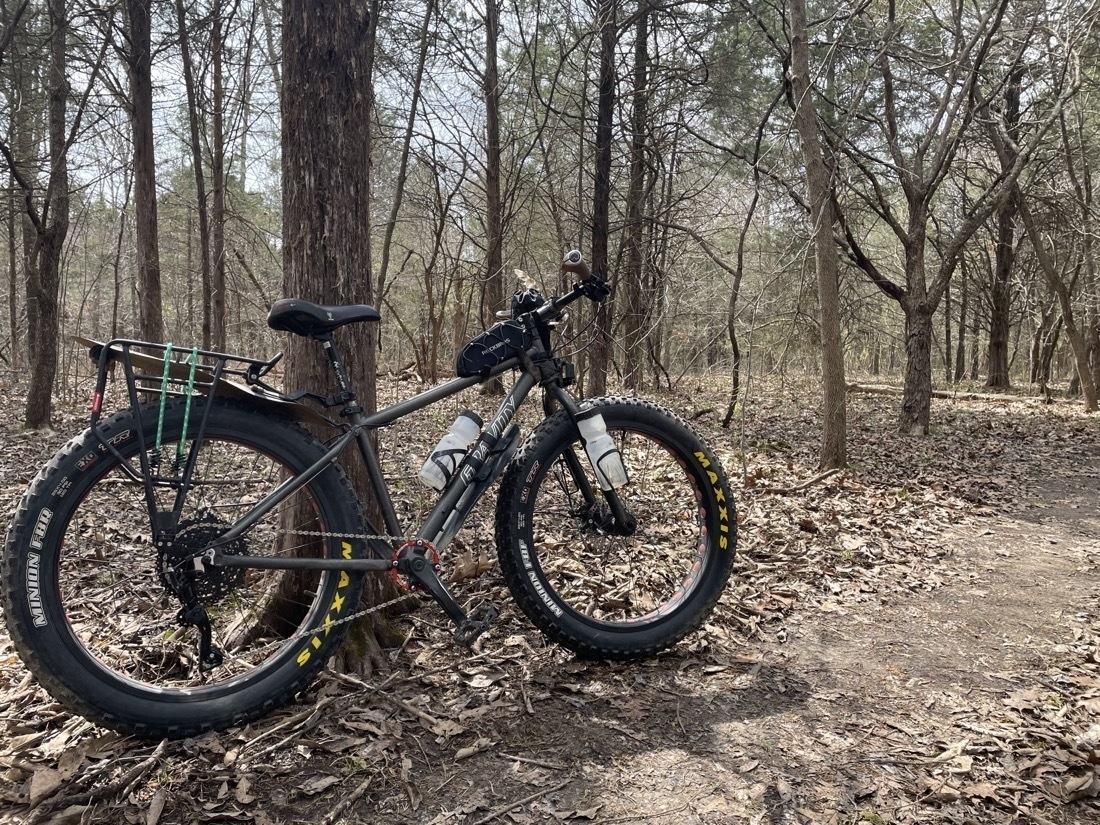

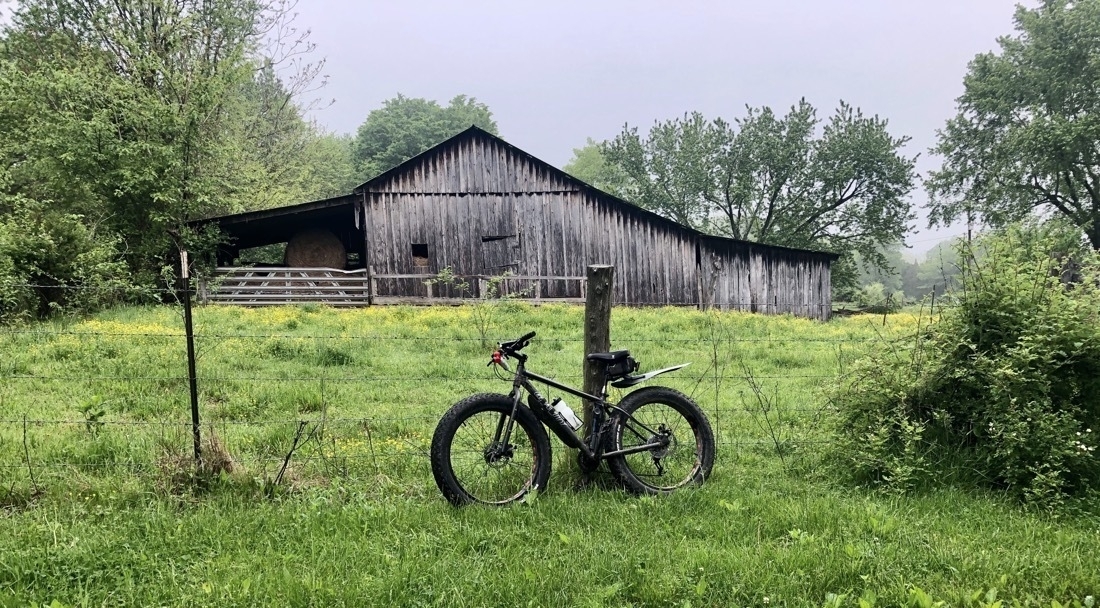
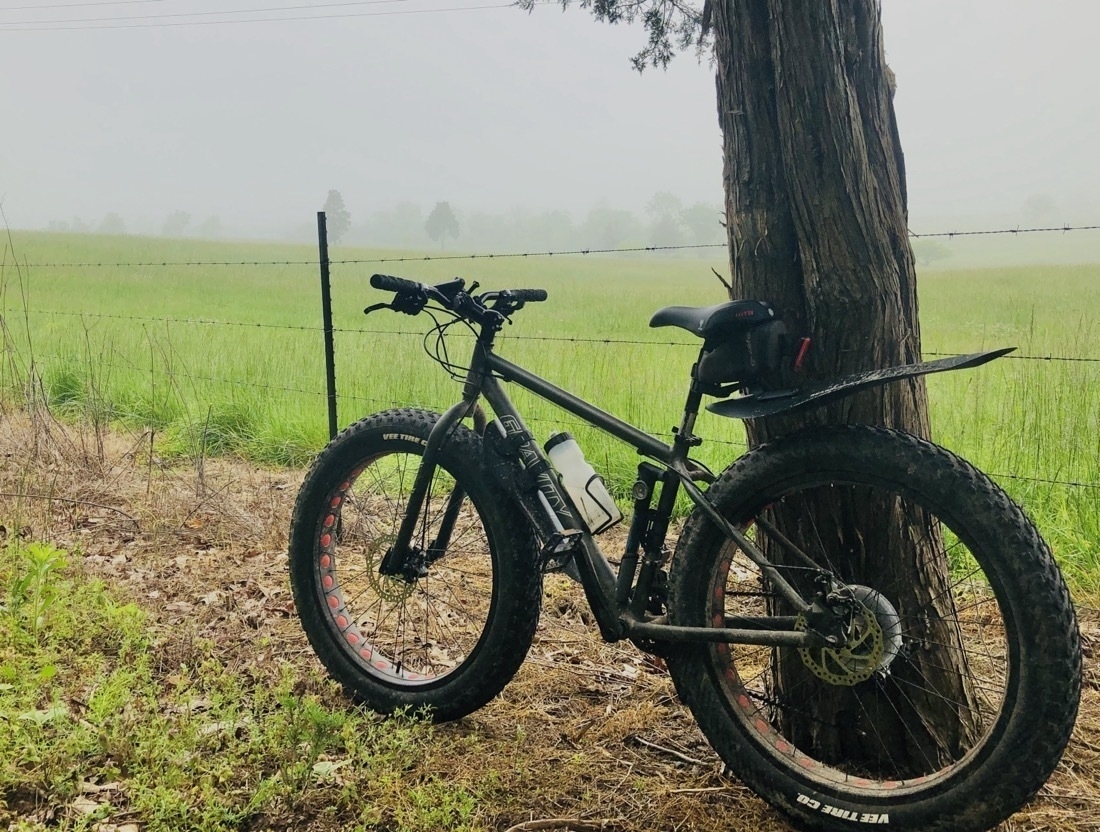
🚲
Hey fellow bike nerds, share your bikes! I’ve got two that I ride. This is my gravel bike. As the name suggests, this is the bike I ride for routes that are a mix of road and gravel. My daily short ride is about 2 miles of gravel, 2 miles rough county pavement. The photos in this post were taken on a much longer ride into the Mark Twain National Forest into a neighboring county, also a mix of gravel and pavement and options for dirt trail as well.
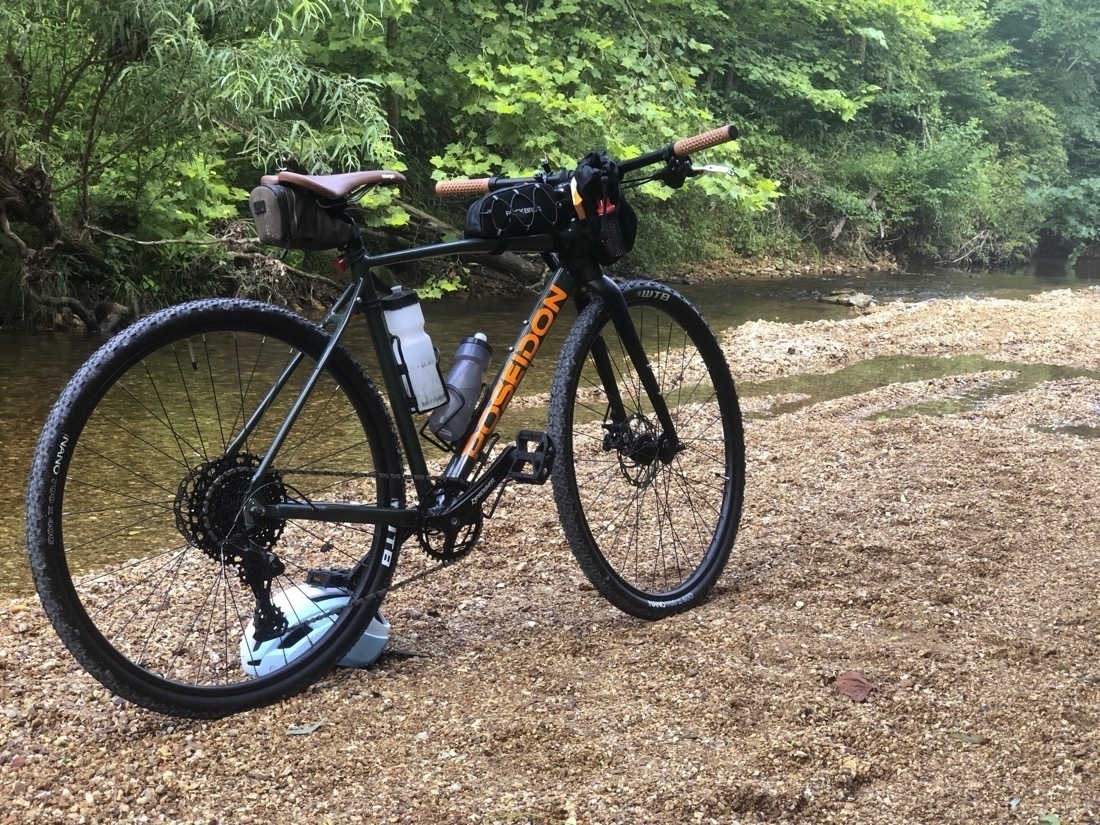

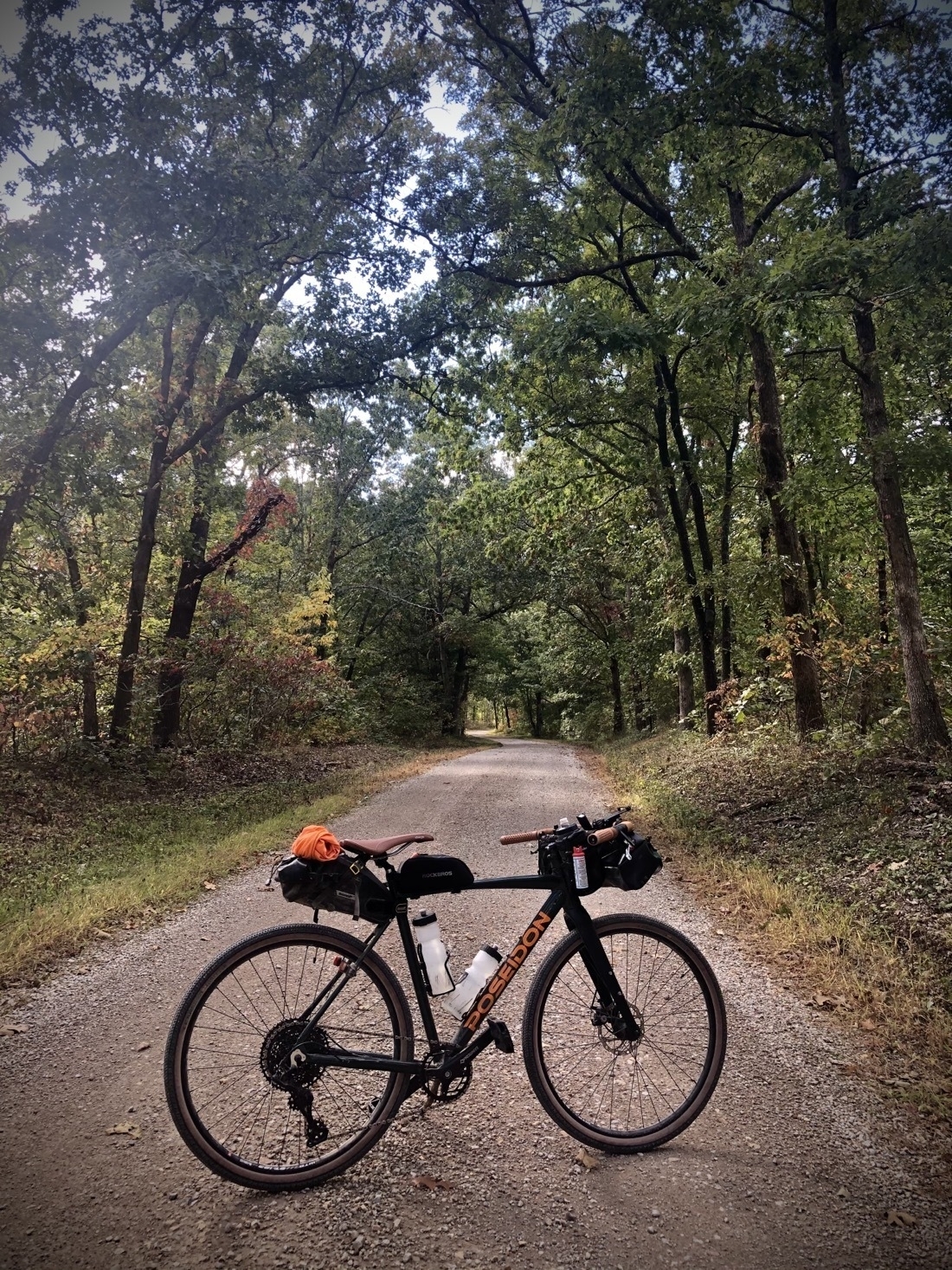
It's been a few days of posting to and moving old Blot posts to Micro.blog and I'm discovering the various different methods/workflows for posting to a hosted account. For the past few years all of my posting was to my WordPress blog which then cross posted here. But when posting here on a hosting account there are new options of course.
Thus far I've used the first party Micro.blog app, the web interface from the timeline and the web interface that shows all posts and allows editing after the post. There are differences between each of them which I'm still learning. On my latest post of butterflies I noticed cropping I hadn't intended so that led to discovering after the fact that in the Micro.blog app it's possible to upload photos and copy the html to paste into a post. The same is possible in the web interface. I just hadn't investigated that option.
It's fantastic that to get started it's all very easy by default but that the more powerful options are there for customizing as needed. I discovered this morning that it's also possible to write and post from iA Writer so I'm trying that out with this post and am unsure how well it will work but will soon find out. Each of these different methods is proving far faster and easier than the posting to my WordPress hosted blog. I'm feeling increasingly certain that moving all of my new posting to micro.blog was a great decision just in terms of ease posting. I only wish I'd made this move earlier but better late than never I suppose!
Eastern Tiger Swallowtail, Papilio glaucus, feeding on nectar from Vernonia baldwinii, the western ironweed.
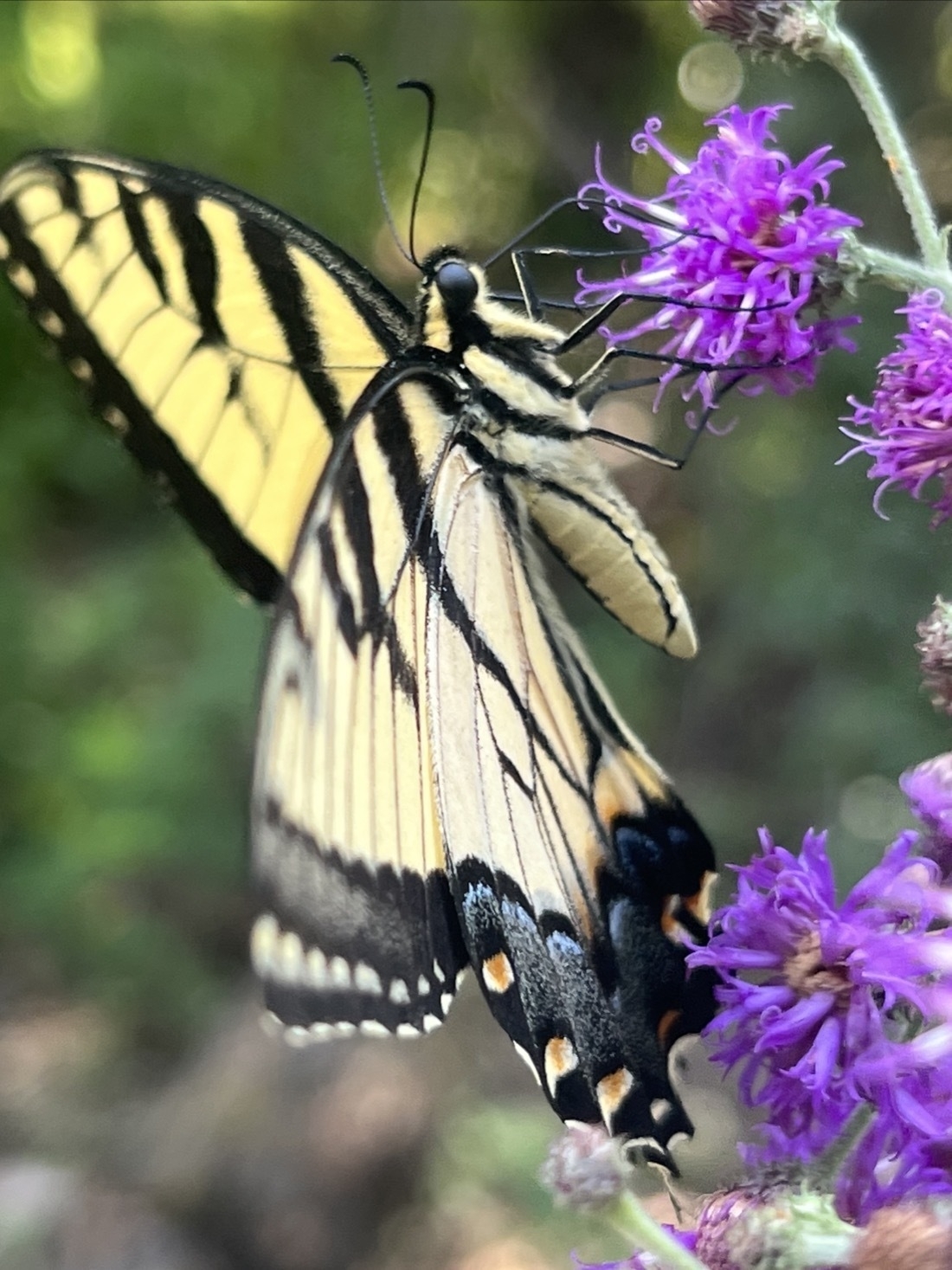


Very sad news but not surprising. From habitat destruction to climate change to chemical agriculture, we’re wreaking havoc. Monarch butterflies are now listed as endangered
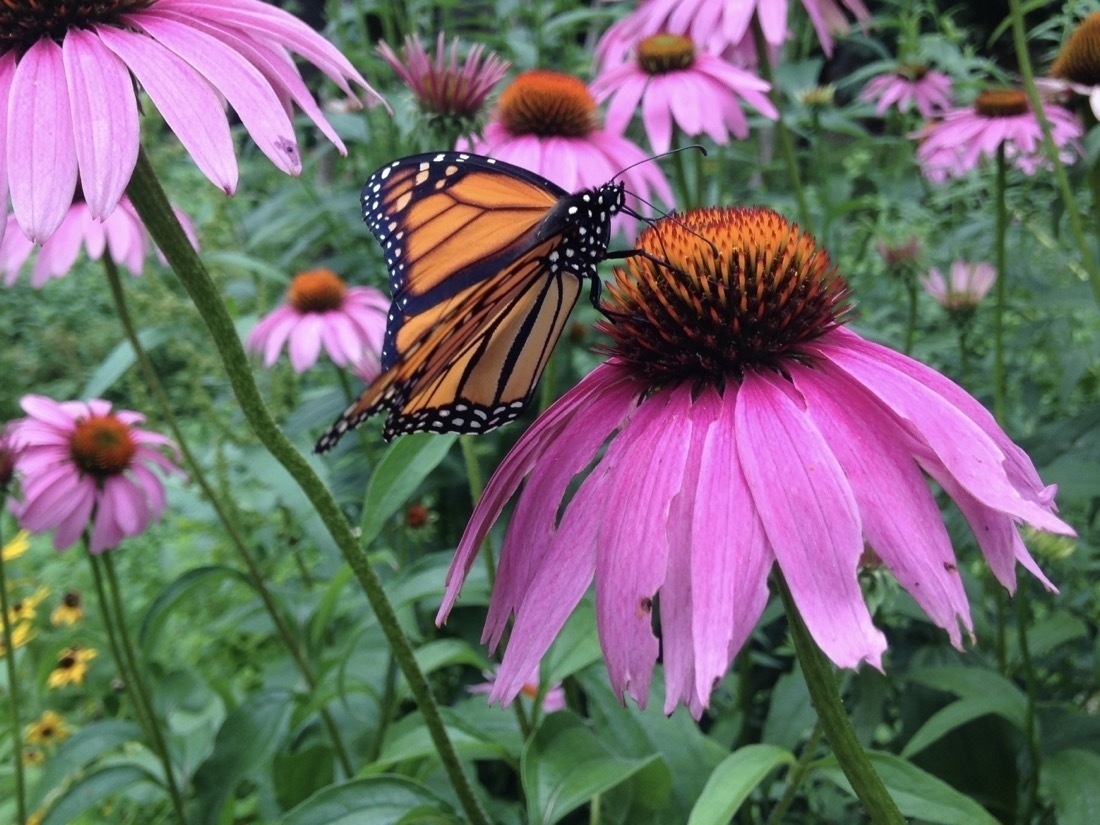
Popped up on my iPad photos widget this morning. Love having old photos brought back to my attention to enjoy again. Cosmo at about 1 year old. He’s such a sweet little fella!

Rosie in the sink because only fresh water from the tap is good enough for her. Happy Caturday to those that celebrate.
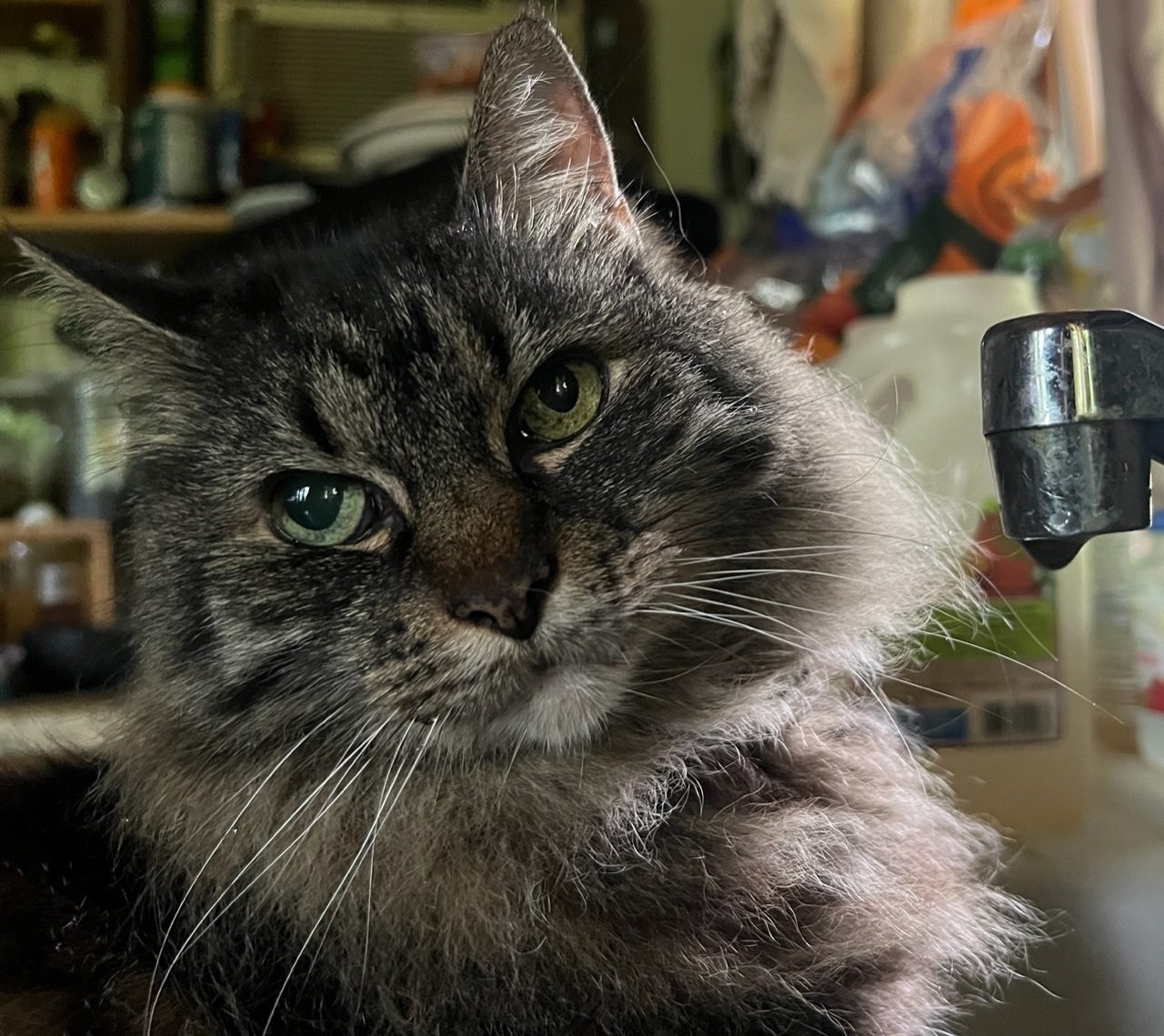
Anyone doing a separate link blog just using a page like this: denny.micro.blog/link-blog… ? My thought is to just have that as a running list of links and perhaps pull a couple of those every day if it’s something I want to comment on as a post.
All new posts moving to Micro Blog
Off and on for the past year I've been increasingly frustrated with the slowness of this blog. Whether loading the site to upload a new post, edit or just view, it's been too slow. I'm still not certain how much of the problem is the server and how much of it is WordPress. Regardless, a few weeks back I decided it was finally time to try a couple of the alternatives I'd been considering. I signed up first for Blot.im as I thought it would be the likely answer. It's a great service but after three weeks I decided I should at least try an account at Micro.blog before making any decisions. I've been cross-posting most of this blog's content there since 2017 but never actually had a full-on hosted account.
After 24 hours using Micro.blog I've decided that I'll be hosting there. It didn't take me long to decide I preferred it. While I do like the simplicity of Blot's posting via files in folders, I'm even more impressed with the speed and ease of posting to Micro.blog. Other benefits of Micro.blog are the templates and other available plugins. To my eyes it looks quite a bit nicer than Blot or WordPress and so much less effort/cruft than WordPress.
So, all future posts will be here: https://denny.micro.blog/
Marasmius siccus, or orange pinwheel, is a small orange mushroom in the Marasmius genus, with a “beach umbrella”-shaped cap.

It seems fairly common amongst humans in modern societies that we seem to focus on our individual selves, we identify as singular human beings. Setting aside the importance of socialization and being a part of families, the human community, and the larger ecological community, it might also be worth mentioning that our individual human body is also not what it seems. Welcome to the human microbiome. Your body is human, bacteria, archaea, fungi, protists and viruses.
The human body is full of bacteria, and in fact is estimated to contain more bacterial cells than human cells.
Source: National Human Genome Research Institute:
Our bodies play host to a wide variety of microbes, called the human microbiota, that outnumber our own cells by about 10 to 1.
Source: Wide Variety of Bacteria Mapped Across the Human Body
In any human body there are around 30 trillion human cells, but our microbiome is an estimated 39 trillion microbial cells including bacteria, viruses and fungi that live on and in us.
Due to their small size, these organisms make up only about 1-3 per cent of our body mass, but this belies the microbiome’s tremendous power and potential.
We have around 20-25,000 genes in each of our cells, but the human microbiome potentially holds 500 times more.
Moreover, the ability of microbes to evolve quickly, swap genes, multiply and adapt to changing circumstances give them – and us, their hosts – remarkable abilities that we’re only now beginning to fathom.
It’s not really shocking though: Global heating has caused ‘shocking’ changes in forests across the Americas, studies find - The Guardian
Trees are advancing into the Arctic tundra and retreating from boreal forests further south, where stunting and die-offs are expected


